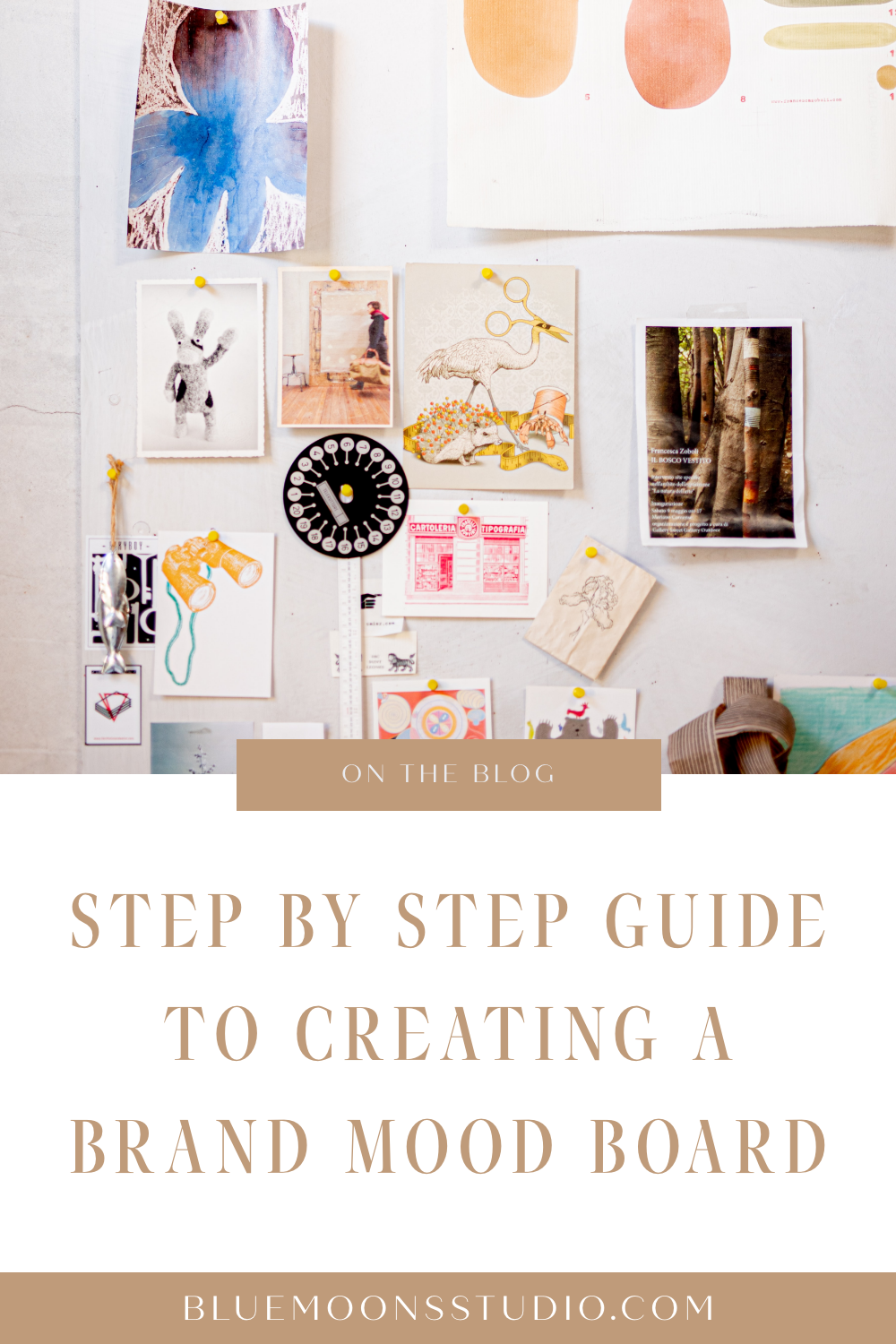How To Create Your Brand Mood Board
Creating a mood board is important and one of the first parts of the branding process. The mood board is oftentimes the first thing you want to create. I get it, it’s a fun process! You get to hop on Pinterest and just start pinning away, pinning everything you like and everything that looks nice. But most of the time the things you are pinning have nothing to do with your business and the future goals you have for your business which will cause you to create a mood board that doesn't reflect the brand you are trying to create
That's why I’m here, to walk you through the process of creating your brand mood board so that you create it in a strategic way.
You want to strategically create a mood board that will reflect your brand values, voice, and mission. So how do you create a mood board with strategy in mind? Today I will be sharing 5 steps to creating a strategic mood board.
Step 1. Get Clear
Before creating any mood boards for my clients, I first go through an in-depth strategy call with them and get clear. You want to get to the who, what and how of your business. So, who are you here to serve, what problem are their problems and how are you helping them solve this problem? You also want to think about what are your brand values, what you believe, and what your ideal clients believe.
Now think of your brand voice. How do you want to show up, how are you going to speak to your people? These are questions you want to really dive deep and ask yourself. DO NOT, I repeat, DO NOT start creating a mood board without getting clear and answering these questions. Between your values and your client’s values, there lies an overlap and this is where you are creating from. Remember that the mood board is the first visual part of your brand and you will reference back to when creating your visual identity.
Step 2. Write Down Your Brand Adjectives
Now that you have the clarity and answered all the questions above we want to start thinking about our brand adjectives. Think of how you want people to feel when they see your brand, and the mood your visitors will preserve when they meet your brand for the first time. Do you want your brand to be vibrant, happy, or calm and classic? Start brainstorming and if you get stuck, ask yourself this, “I want my brand to make people feel ().” Think of 3-5 adjectives and write them down. As you go through this step, always refer back to the questions you answered in Step 1.
Step 3. Find Inspiration
Now the fun part begins!
You have put in the work, and now you can begin collecting images that align with what came up in steps 1 and 2. Using Pinterest or Unsplash, you can start to collect any kind of images that resonate, this can include lifestyle photography, interior design, fashion, typography, color palettes, patterns, graphics, and the list goes on. Just make sure that when you are collecting these images there is a reason behind why you selected them and it ties back to the brand strategy. I suggest collecting anywhere from 30-40 visuals.
Step 4. Refine Your Selection
Once you have a good selection of images it's time to narrow it down. Look at the images you selected and choose the ones that most align with the adjectives you selected in step 2. What fits and what doesn’t. By now you should be seeing a certain pattern and color palette throughout the images you selected.
You want to work with the images that convey the feelings you want to convey to your target audience and remember the images should align with your brand values. You should end up with 10-15 images to work with.
Step 5. Create
Now that you've narrowed down the images, it's time to create the actual mood board! So you may be wondering, okay but how do I create the board if I don't have those design tools designers use. Well don't fear there is a free design tool, if you haven’t heard of it, it’s Canva.
Canva has a variety of templates to use to create the mood board. You will have to download the images you selected and then upload them onto Canva. Once they are uploaded you can play around with the images until you have the right, and what I mean by this is, when you look at your mood board, is it evoking the feelings you want your brand to evoke and it is aligning with your values. If you achieve this, then you are all done.
Congratulations you have completed your brand mood board! You will then be able to use this mood board as a reference when you continue to create your brand presence.
If you want to dive in a little deeper, check out my Brand Clarity workbook! This workbook walks you through the steps I take with my clients when creating their brand’s creative direction. Download the Brand Clarity Workbook Here
Thanks for reading!

